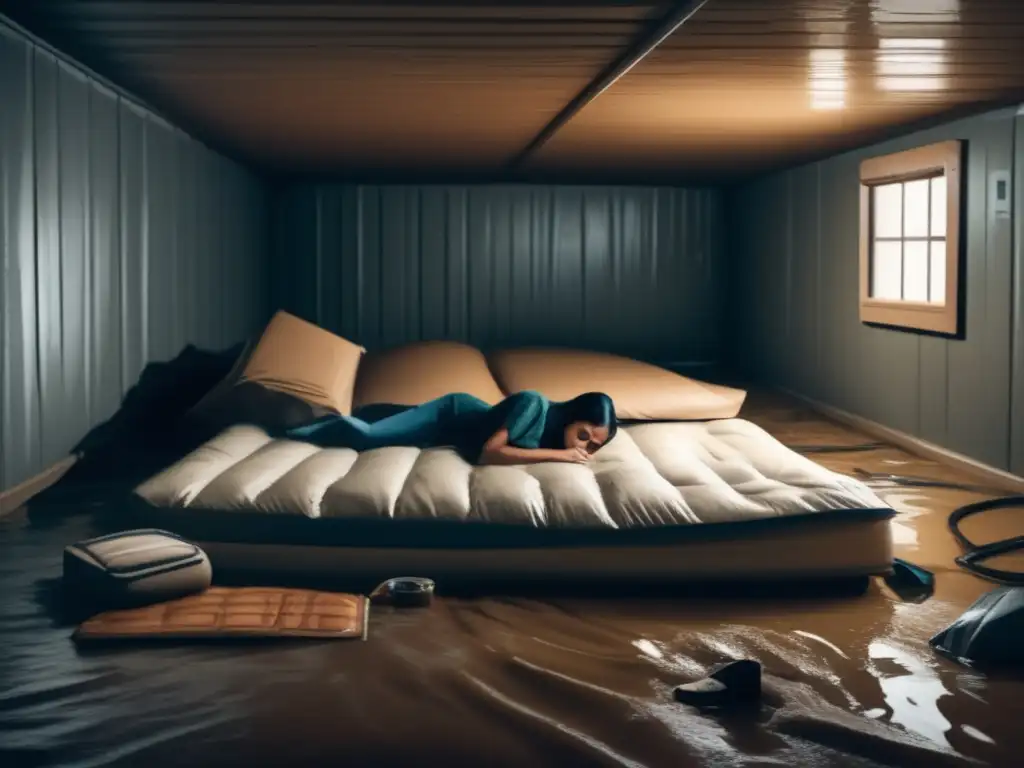The Safe Haven: Choosing The Best Room In Your Home During A Hurricane

The Safe Haven: Choosing the Best Room in Your Home During a Hurricane
Introduction
When a hurricane strikes, it's important to have a plan in place to keep you and your family safe. One crucial aspect of that plan is choosing the best room in your home to weather the storm. Different rooms may provide different levels of protection, so it's important to understand which ones are best suited for sheltering during a hurricane.
Factors to Consider When Choosing a Safe Room

Type of Construction
Some homes are built with reinforced concrete walls or concrete block construction, which may provide added protection against high winds and flying debris. Homes with these types of construction may offer more safe options for sheltering during a hurricane than homes with less sturdy construction materials.
Location in the Home
The location of the room you choose can also play an important role in determining its safety. Rooms that are located on the first floor and farthest from the direction of the approaching storm may provide more protection than those that are located on higher floors or closer to the storm's path.
Accessibility
It's important to choose a room that is easily accessible and does not require you to cross through other rooms or areas of your home that may be more vulnerable to damage from high winds and flying debris. Additionally, it's important to ensure that the room has a clear path to any necessary supplies or equipment, such as a first aid kit or portable radio.
Rooms to Consider for Shelters

Basement
A basement can be an ideal location to shelter during a hurricane, as it is typically located on the lowest level of the home and away from windows and doors. However, it's important to make sure that the basement is properly waterproofed and does not have any potential for flooding or water damage. If you live in an area prone to flooding, a basement may not be the safest option.
Interior Bathroom or Closet
An interior bathroom or closet can provide safe shelter during a hurricane, as they often have no windows and are located towards the interior of the home. However, it's important to make sure the space is large enough to accommodate everyone who will be taking shelter, and to ensure that there are no potential hazards, such as loose shelving or other items that could become dislodged during high winds.
Pantry or Storage Room
A pantry or storage room can also provide safe shelter during a hurricane, as they are typically located towards the interior of the home and do not have any windows. Like with an interior bathroom or closet, it's important to ensure that the space is large enough to accommodate everyone and that there are no potential hazards present.
Additional Tips for Choosing a Safe Room

Windows and Doors
When choosing a safe room, it's important to make sure that there are no windows or glass doors that could become damaged or shattered during the storm. If your chosen room does have windows or glass doors, consider boarding them up or covering them with storm shutters to protect against flying debris.
Supplies and Equipment
Make sure that your safe room is stocked with necessary supplies and equipment, such as blankets, first aid kits, flashlights, and batteries. It's also a good idea to have a portable radio or other means of receiving weather updates so that you can stay informed about the storm's progression.
Practice Your Plan
Practice your hurricane plan with everyone in your household, including children and elderly family members. Make sure that everyone knows where to go in the event of a hurricane and what supplies they will need to bring with them. It's also a good idea to do a trial run of setting up your safe room ahead of time, so that you can identify any potential issues or hazards that may need to be addressed.
Frequently Asked Questions

-
What if I don't have a basement or interior bathroom/closet?
If you don't have a basement or interior bathroom/closet, consider choosing a room that is located towards the center of your home, away from windows and doors. Additionally, you may want to invest in storm shutters or boarding up windows and glass doors to protect against flying debris.
-
What if there are multiple people in my household?
Make sure that your chosen safe room is large enough to accommodate everyone who will be taking shelter. You may need to choose a larger room, such as a living room or dining room, or consider setting up multiple safe rooms if necessary.
-
What if my chosen safe room is not on the first floor?
If your chosen safe room is not located on the first floor, make sure that there is a clear path to get to it and that you do not need to cross through other areas of your home that may be more vulnerable to damage from high winds and flying debris.
-
What if my chosen safe room is not accessible for someone with disabilities?
If your chosen safe room is not accessible for someone with disabilities, consider choosing a different room or making necessary modifications to the room to ensure that it is accessible.
-
What if there is a power outage during the storm?
Make sure that you have a supply of batteries and flashlights on hand in your safe room. You may also want to consider purchasing a generator to provide backup power during an extended power outage.
Conclusion
Choosing the best room in your home to shelter during a hurricane can mean the difference between life and death. By considering factors such as type of construction, location, and accessibility, you can make an informed decision about which room will offer the most protection during a storm. It's important to practice your hurricane plan ahead of time and to make sure that you have necessary supplies and equipment on hand in your safe room. Stay safe!
If you have any questions or additional tips for choosing a safe room during a hurricane, please share them in the comments below!
Additional Resources

 Weathering The Storm: What To Expect During A Hurricane
Weathering The Storm: What To Expect During A Hurricane Avoiding Electrical Hazards During A Hurricane
Avoiding Electrical Hazards During A Hurricane Car Safety: What To Do If Caught In A Hurricane While Driving
Car Safety: What To Do If Caught In A Hurricane While DrivingIf you want to discover more articles similar to The Safe Haven: Choosing The Best Room In Your Home During A Hurricane, you can visit the During the hurricane: category.
Leave a Reply

Articulos relacionados: